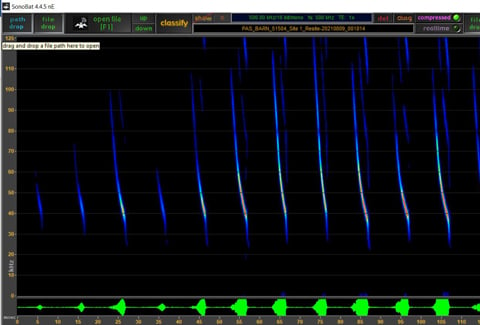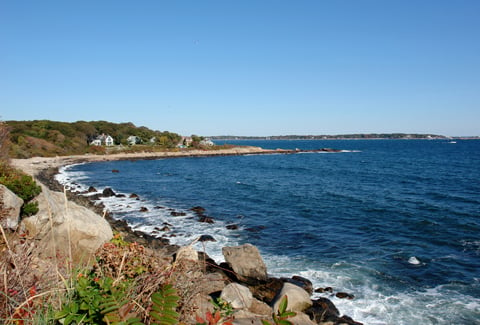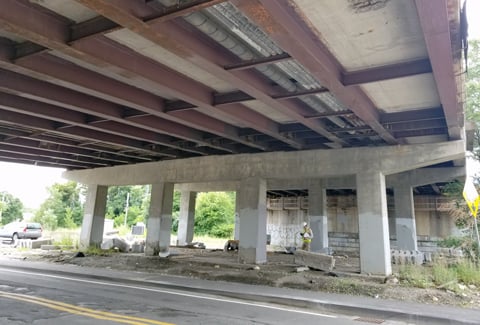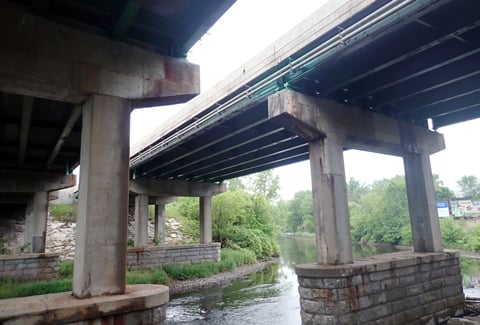The northern long-eared bat (Myotis septentrionalis; NLEB) has been up-listed from threatened to endangered by the U.S. Fish and Wildlife Service (USFWS) under the Endangered Species Act (ESA; 16 U.S.C. § 1531 et seq.). Listed as threatened in 2015, the NLEB is endangered with extinction largely due to white nose syndrome, a disease caused by an introduced fungal pathogen that has decimated its population. The NLEB is a geographically wide-ranging species, occurring across 37 states in a variety of habitat types. Projects across its footprint should consider impacts to this species based on the new requirements.
The final rule classifying the NLEB as endangered went into effect on March 31, 2023. Preceding the effective date of the ruling, the USFWS released new tools and resources to aid stakeholders in assessing project impacts to the NLEB. VHB biologists have closely followed the regulatory changes and guidance documents surrounding the new ruling so we can best support clients navigating this change at every stage of their projects.
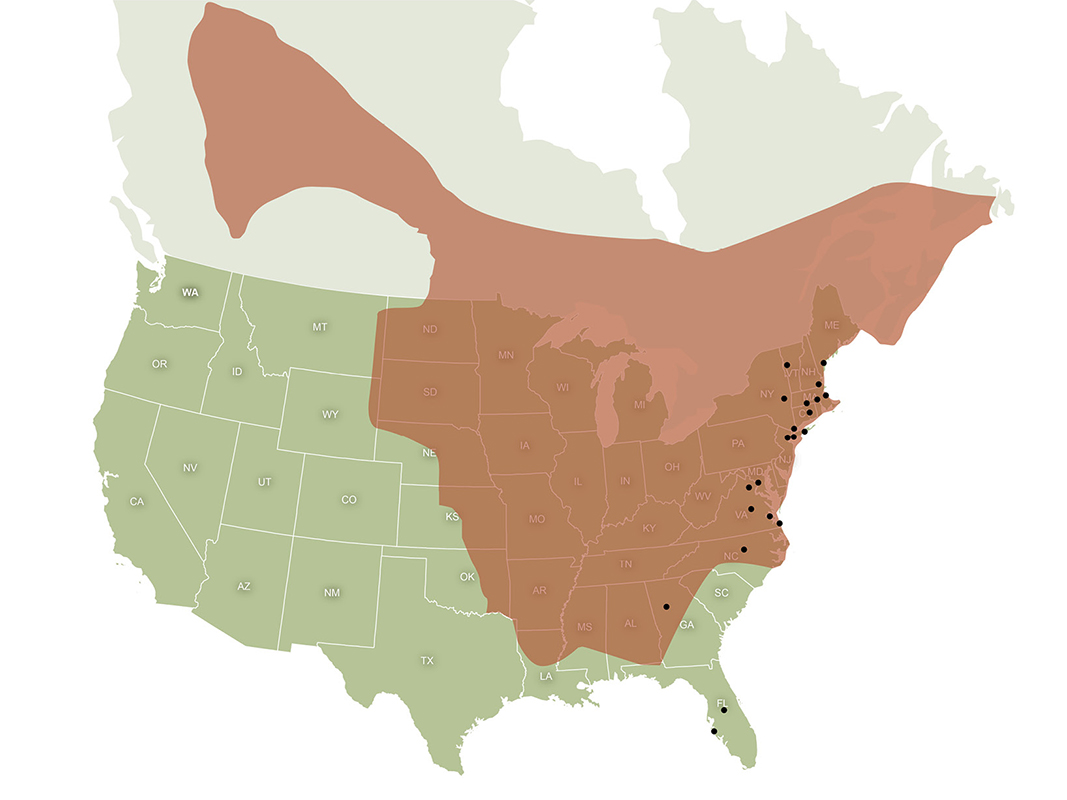
How Can VHB Help?
VHB specializes in bat surveys and analyses that are compliant with the most current USFWS guidelines. VHB has trained biologists who specialize in bat survey techniques that include passive and active acoustic monitoring; mist-netting, emergence, and hibernacula surveys; and visual assessments of bridges and structures. Our biologists are trained in performing bat call analyses using USFWS-approved and candidate auto-classification software and conducting qualitative reviews of calls in full-spectrum and zero-cross format. VHB works closely with clients and regulators to provide survey results, facilitate Section 7 and 10 consultations under the ESA, and determine whether and which conservation measures are required while working to meet project goals and schedules. We understand that addressing sensitive resource issues early, like a project’s potential impacts on rare, threatened, and endangered (RTE) species, are a critical regulatory hurdle required to move a project from concept to completion.
Survey Techniques
With the NLEB in decline and federal and state protections anticipated to increase for some other bat species, clients are turning to VHB to conduct bat surveys to support project consultations under Sections 7 and 10 of the ESA. VHB specializes in performing presence/probable absence (P/A) surveys targeting the NLEB and other RTE bat species that are protected at the state level or being considered for protection under the ESA including the tri-colored bat (Perimyotis subflavus) and the little brown bat (M. lucifugus).
Habitat Assessments
The initial step to evaluating potential impacts of a proposed action on the NLEB is the determination of the presence of potentially suitable habitat within the project’s action area. VHB biologists are well-versed in the assessment of potentially suitable NLEB habitat and understand that the occurrence of the NLEB across its known geographic range has been refined by USFWS via survey data and spatial occupancy modeling. VHB biologists will recommend if a follow-up P/A survey is needed based on the new consultation tools released by USFWS, the presence of potentially suitable NLEB habitat, and the potential impacts of the proposed project on the NLEB.
Acoustic Surveys
Acoustic surveys are one way of conducting P/A surveys to determine whether a project is required to incorporate NLEB conservation measures. VHB’s biologists are proficient in conducting acoustic surveys and the associated analyses required by the USFWS to identify the calls of unknown species, when possible. This skill is essential in evaluating the presence of federally- or state-listed bats in a project area since auto-classification software can be unreliable in differentiating between the NLEB and other species of concern.
Visual Assessments
VHB biologists conduct visual assessments of bridges, culverts, and other structures to identify indicators of roosting bats through auditory (i.e., squeaks) and visual cues such as staining and guano. If positive indicators of roost occupancy are present, VHB works with clients to identify the next steps, which could include molecular analyses of guano, acoustic or emergence surveys to identify species present, or coordination with the local state or federal agency to assume presence and implement avoidance and minimization measures (AMMs) or other conservation measures.
Capture and Tracking Surveys
VHB holds a Section 10 Species Recovery Permit issued by the USFWS, which allows for survey methods that require the handling of specific federally listed bat species. VHB biologists are experienced in conducting mist- netting surveys. This survey technique is sometimes used as a research component and/or follow-up to acoustic surveys. It is also used as the primary method of P/A surveys where species of concern have similar calls and their geographic ranges overlap.
Consultations
VHB works closely with clients and regulators to deliver survey results, facilitate Section 7 and 10 consultations under the ESA, and work with the USFWS to determine whether conservation measures are required while working to achieve project goals and schedules. VHB is prepared to assist clients with the newly issued consultation framework for the NLEB and is proficient in the standard consultation framework for other federally protected species. VHB biologists are also prepared to assist clients outside of the federal nexus in staying compliant with Section 9 of the ESA, which prohibits take of federally listed species.
Data Management
Upon client request, VHB can prepare call files and metadata for upload to the North American Bat Monitoring Program (NABat), which is a collaborative network that collects monitoring data across the continent to improve the science of where, when, and how bat populations are changing over time. Sharing data through NABat has the double benefit of increasing the data inventory of bat surveys while also providing a secondary storage location for bat call files.










